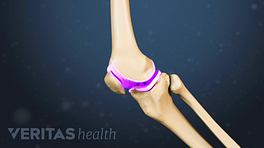Research suggests eating more omega-3 rich foods and fewer omega-6 rich foods can lower inflammation and reduce arthritis pain. 1 Murakami I, Murakami K, Hashimoto M, et al. Intake frequency of vegetables or seafoods negatively correlates with disease activity of rheumatoid arthritis. PLoS One. 2020;15(2):e0228852. Published 2020 Feb 13. doi:10.1371/journal.pone.0228852 , 2 Sibille KT, King C, Garrett TJ, et al. Omega-6: Omega-3 PUFA Ratio, Pain, Functioning, and Distress in Adults With Knee Pain. Clin J Pain. 2018;34(2):182-189. , 3 Gioxari A, Kaliora AC, Marantidou F, Panagiotakos DP. Intake of ω-3 polyunsaturated fatty acids in patients with rheumatoid arthritis: A systematic review and meta-analysis Nutrition. 2018 Jan;45:114-124.e4. doi: 10.1016/j.nut.2017.06.023. Epub 2017 Jul 8. Review. PubMed PMID: 28965775. Learn about these fatty acids, which foods to avoid, and which foods to stock up on.
Omega-3 vs. omega-6 fatty acids
Both omega-3 and omega-6 fatty acids are polyunsaturated fatty acids (PUFA) and essential to the body. However, there are important differences:
- Omega-3 fatty acids are associated with decreased inflammation. Omega-3 fatty acids are found in many foods, including salmon, eggs, walnuts, and flaxseed, as well as leafy green vegetables, such as spinach. Perhaps not surprisingly, these foods are commonly recommended as part of an anti-inflammatory diet.
- Omega-6 fatty acids are associated with increased inflammation. Omega-6 fatty acids are found in most vegetable oils, including sunflower, corn, and canola oils, as well as meats, such as chicken, pork, and beef (—though grass-fed beef can be a source of omega-3s 4 Jain R, Bronkema SM, Yakah W, Rowntree JE, Bitler CA, Fenton JI. Seasonal differences exist in the polyunsaturated fatty acid, mineral and antioxidant content of U.S. grass-finished beef. PLoS One. 2020;15(2):e0229340. Published 2020 Feb 26. doi:10.1371/journal.pone.0229340 , 5 Daley CA, Abbott A, Doyle PS, Nader GA, Larson S. A review of fatty acid profiles and antioxidant content in grass-fed and grain-fed beef. Nutr J. 2010;9:10. Published 2010 Mar 10. doi:10.1186/1475-2891-9-10 ).
An easy way to lower your intake of omega-6 fatty acids is to avoid fried foods. For example, instead of ordering French fries, order a baked potato (just be sure to go easy on the butter, which also contains omega-6 fatty acids). If you make fries at home, try using an air fryer.
The ratio level of omega-6 to omega-3 matters
Health experts believe omega-6 and omega-3 fatty acids compete to be absorbed in the digestive tract. Both require the same type of digestive enzymes to be broken down and absorbed. 6 Omega-3 Fatty Acids: Fact Sheet for Health Professionals. Office of Dietary Supplements (ODS). National Institutes of Health. Updated: October 17, 2019. Accessed March 19, 2020. https://ods.od.nih.gov/factsheets/Omega3FattyAcids-HealthProfessional/ So, even if you eat enough omega-3 fatty acids, eating too many omega-6 fatty acids may prevent you from deriving the full anti-inflammatory benefits.
To be clear, just about everyone eats more omega-6s than omega-3s, and that’s okay. The key is to lower the ratio of omega-6s to omega-3s. Experts suspect that for most Americans, that ratio is currently about 16:1. 7 Simopoulos AP. The importance of the omega-6/omega-3 fatty acid ratio in cardiovascular disease and other chronic diseases. Exp Biol Med (Maywood). 2008;233(6):674-88. doi:10.3181/0711-mr-311 The ideal ratio for effectively reducing inflammation, including inflammation related to knee arthritis pain, may be closer to 4:1. 7 Simopoulos AP. The importance of the omega-6/omega-3 fatty acid ratio in cardiovascular disease and other chronic diseases. Exp Biol Med (Maywood). 2008;233(6):674-88. doi:10.3181/0711-mr-311
Read more about Knee Pain and Arthritis
Research about omega-3s and arthritis
In one clinical study, 2 Sibille KT, King C, Garrett TJ, et al. Omega-6: Omega-3 PUFA Ratio, Pain, Functioning, and Distress in Adults With Knee Pain. Clin J Pain. 2018;34(2):182-189. researchers took blood samples from 167 adults with knee arthritis.
- Researchers measured the ratio of omega-6 to omega-3 in each blood sample.
- The experts categorized each blood sample on its ratio.
- They then compared knee pain and function of people who had relatively high ratio levels of omega-6 to -3 to people who had relatively low ratio levels of omega-6 to -3.
- Results showed that individuals who had relatively high amounts of omega-3 in their blood had less knee arthritis pain, better knee function, and less stress.
While this study and others are encouraging, more clinical research is needed to learn about the effects of omega-3 and omega-6 fatty acids on arthritis.
Learn more:
- 1 Murakami I, Murakami K, Hashimoto M, et al. Intake frequency of vegetables or seafoods negatively correlates with disease activity of rheumatoid arthritis. PLoS One. 2020;15(2):e0228852. Published 2020 Feb 13. doi:10.1371/journal.pone.0228852
- 2 Sibille KT, King C, Garrett TJ, et al. Omega-6: Omega-3 PUFA Ratio, Pain, Functioning, and Distress in Adults With Knee Pain. Clin J Pain. 2018;34(2):182-189.
- 3 Gioxari A, Kaliora AC, Marantidou F, Panagiotakos DP. Intake of ω-3 polyunsaturated fatty acids in patients with rheumatoid arthritis: A systematic review and meta-analysis Nutrition. 2018 Jan;45:114-124.e4. doi: 10.1016/j.nut.2017.06.023. Epub 2017 Jul 8. Review. PubMed PMID: 28965775.
- 4 Jain R, Bronkema SM, Yakah W, Rowntree JE, Bitler CA, Fenton JI. Seasonal differences exist in the polyunsaturated fatty acid, mineral and antioxidant content of U.S. grass-finished beef. PLoS One. 2020;15(2):e0229340. Published 2020 Feb 26. doi:10.1371/journal.pone.0229340
- 5 Daley CA, Abbott A, Doyle PS, Nader GA, Larson S. A review of fatty acid profiles and antioxidant content in grass-fed and grain-fed beef. Nutr J. 2010;9:10. Published 2010 Mar 10. doi:10.1186/1475-2891-9-10
- 6 Omega-3 Fatty Acids: Fact Sheet for Health Professionals. Office of Dietary Supplements (ODS). National Institutes of Health. Updated: October 17, 2019. Accessed March 19, 2020. https://ods.od.nih.gov/factsheets/Omega3FattyAcids-HealthProfessional/
- 7 Simopoulos AP. The importance of the omega-6/omega-3 fatty acid ratio in cardiovascular disease and other chronic diseases. Exp Biol Med (Maywood). 2008;233(6):674-88. doi:10.3181/0711-mr-311











